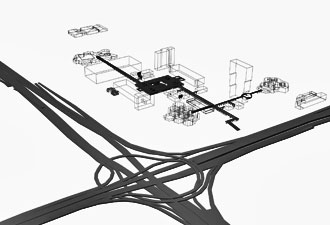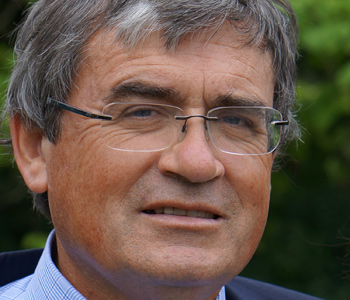Sharon Haar
The City As Campus: Urbanism and Higher Education in Chicago
University of Minnesota Press
264 pages, 7 x 10 inches
ISBN 978 0816665648 hb
ISBN 978 0816665655 pb
The City as Campus is concerned with how higher education is situated within urban environments.
I explore how urban universities’ missions of service, teaching, and research have transformed over time—as they have responded locally to their place and globally to new sites for the production of knowledge in a network society.
As we witness an explosion of universities and campuses nationwide, we are also seeing that urban universities are playing important new roles in shaping the cities outside their walls. Through the development of buildings for themselves and for their neighborhoods, universities are acting as developers, planners, and urban designers. At the same time they are developing new thinking around ideas of urban form and social life.
The City as Campus is a case study of Chicago and its universities. But it is also indicative of and situated within larger national trends. Urban universities are not just institutions that happen to be in a city; their founding premises and historical trajectories rest on their relationship to the city and its unique conditions, be they social, cultural, physical, economic, etc.
The book is not a comprehensive history of higher education or campus design in Chicago. Rather, it is a story about specific institutions that can trace their origins to moments of intense urban transformation. In these examples the urban campus is imbricated in the city by virtue of the need to produce urban citizens—and equally importantly, knowledge about social and urban forms that lead to new models of urban planning and design. What binds these unique examples together is what they teach us about the interrelationship of knowledge and urbanism.
As both urban institutions of higher education and spatial practices of campus design, Chicago’s universities evolved in direct relationship to their urban and later metropolitan context. I look at how design, both architectural and urban, is used to represent, negotiate, and influence the relationship between universities and their communities and, ultimately, the success or failure of this exchange.
Through a close analysis of Chicago and its campuses through the twentieth and early twenty-first centuries the book illustrates how higher education specifically, and knowledge more broadly, were integrated into ideas of urban growth and development in what were often tense battles over urban space. The book also illustrates how campus designers integrated the social, spatial, and architectural conditions of the urban milieu into new forms to meet the changing needs of higher education.
For someone who felt passionately about cities from a very young age, my formal education actually took place away from them. Early on I was aware of the ways in which my context influenced what I was taught and how it was taught to me, and I began to augment my formal education with an informal one exploring the streets, buildings, and institutions of New York City.
The City as Campus was born as my graduate thesis project at Princeton—the design of a curriculum and building for a School of Architecture, Landscape, and Urban Design for the New School for Social Research, which was contemplating a smaller version of just such a program. Later I had the opportunity to actually build the curricular content for this program and to teach in it.
During the period of time this book was in gestation, I had the remarkable opportunity to work at the University of Illinois at Chicago—a large, urban, public, largely-commuter, research university that could not be more different from the spaces where I had my own educational experiences.
At UIC pedagogy and urban life are constantly in flux, offering challenges to students, staff, and faculty alike. The history of UIC’s location and its transformations and expansions are the points of departure for this book. But what I thought was a unique condition is constantly reflected back to me as colleagues across the country relate the growing pains and ever-changing missions of their own schools and campuses.
The City as Campus turns many suppositions about the American campus on their heads. The first of these is the architect Robert A.M. Stern’s statement that a campus is ideally “a place apart,” as exemplified in Thomas Jefferson’s design for the University of Virginia campus, small New England colleges, and large land grant universities. The second idea, closely related to the first, is that a campus is a form of ideal city, unaffected by and disinterested in its context.
In The City as Campus I maintain that the urban campus is a unique spatial type. The urban campus integrates the need to produce new environments for the creation of scholarship, research, and expertise on emerging urban space and social, cultural, and economic practices with the need to produce new forms for the encounter of pedagogy, research, and the city.
Through this case study I argue for a return to the model of campus-community interdependency present in the earliest stages of American collegiate growth, when institutional development was prompted by local community need. But I do not advocate the cloistered form that many of these campuses eventually took. Instead I suggest this is the moment to reconceive the campus not as a discrete community set apart from others but as an urbanity capable of engaging both new forms of cities and city living brought about in physical and virtual space.
Chicago occupies a particular place in the development of American urbanism. Urban reform movements, the city beautiful movement, modern architecture, and urban renewal and public housing were developed and tested in Chicago, often before being transferred nationwide, with both positive and negative results.
The University of Illinois at Chicago campus was built at the same time as the interstate expressways that radiate from the city center. And it was originally called the University of Illinois at Chicago Circle (UICC), for the interchange just to its northeast. When the campus first opened in 1965 it was hailed as “the model for the modern urban university.”
In contrast to the original University of Illinois campus in Urbana-Champaign, with a large green field at its center, the “Circle” campus was designed to teach a lesson about the form of the modern American city, a functionally zoned environment connected by express walkways that hovered above the ground, bringing commuter students to a vast forum and lecture halls at its center.
If the UICC campus was to be a demonstration project for the twentieth century city—a city within a city or a campus as a city—the community it replaced was an example of the neighborhood-based city of the nineteenth century.
The Near West Side, where the campus was built, was also the home of the Hull-House Social Settlement, an institution central to the creation of the progressive city. As a consequence, the choice of location and the battles that ensued from this choice speak as much to the history of urban ideas as the pedagogy for the masses that the architecture housed.
As the campus and its educational programs, student population, and research agendas expanded to meet the demands of the late twentieth and now early twenty-first century, both its architectural and urban forms transformed with them, continuing to tell a story of Chicago urbanism.
The UIC campus, a purpose-built, urban-grant institution, stands in contrast to the emergence of “Loop U,” an assemblage of colleges, universities, schools of art and design, and career academies woven in and around the buildings of the southern end of the city’s historic business district. Here there is no lawn and no center. If UIC was initially designed to be the campus for the inner city and suburban citizen, “Loop U” accommodates the needs of the global city, intermixing art, design, media and IT students with business, law, and culinary institute students. As these institutions revitalize abandoned department stores and outdated office space they also broadcast a new image of the city.
The University of Illinois at Chicago Circle as designed (Cecilia Benites and Sharon Haar).

In the end, The City as Campus is concerned with the situation of higher education, how its missions of service, teaching, and research have transformed over time as it has responded locally to its place in an increasingly urbanized, globalized community.
Today the goals of campus design and urban design have begun to merge, often to one another’s benefit. However, as the university proliferates it can create patterns of urban growth that without careful planning and control can be inimical to the character of the cities in which they are situated.
In the book’s conclusion I look at the broader situation of higher education within both physical and virtual space. Bill Readings’s call to understand the scene of teaching as a “network of obligations” can be extended to the relationship between the institution and its host.
Higher education continues to transform in the twenty-first century, discovering new purposes, forms, student populations, and meanings, even as we come to recognize the increasingly non-situatedness of the academic community. If on the one hand, as Arjun Appadurai, Manuel Castells and others note, “ideas and ideologies, people and goods, images and messages, technology and techniques” move in a “space of flows,” at the same time, according to Saskia Sassen, the ability of a city to remain or become central rather than marginalized in this global network requires it to be a site of “production and innovation.”
As American universities expand their global footprint, the way they understand the campus as the embodiment of the institutional mission will become increasingly important.




We don't put paywalls. We don't distract you with ads. We don't sell your data.
Please help to keep this running!